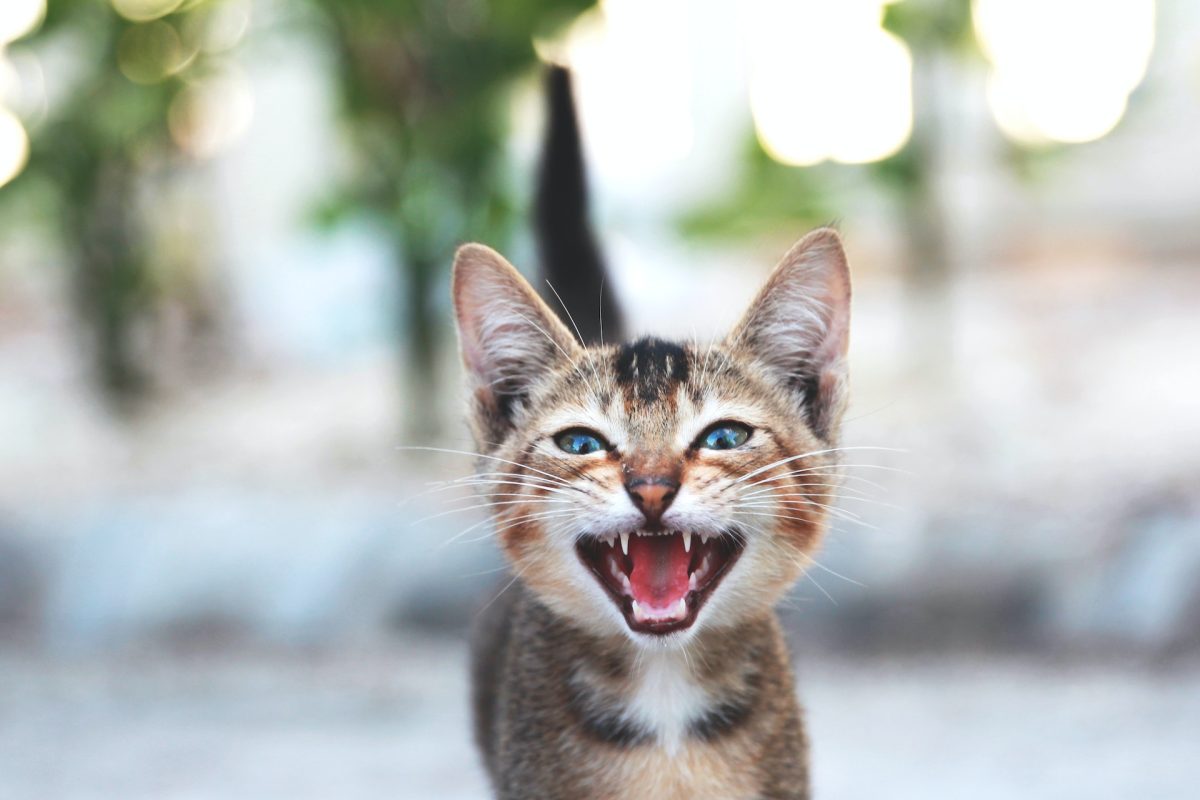
What Does Your Cat’s Meow Mean?
3 May 2020.
Cats can be incredibly vocal creatures. But did you know that most meows are saved just for people? Below, Cat in a Flat looks at some of the reasons that felines meow. Plus, how you can start to interpret what they are saying to you. Remember that each kitty is different, so deciphering what your furry friend is saying will take individual time and attention.
Table of contents
Why cats meow
Meowing starts in cats when they are kittens. Mewing is a way for kittens to tell their mummy that they need attention, food or warmth. A mother cat will similarly chirp and meow at her kittens to communicate with them. Before kittens’ eyes open and their senses develop, vocal cues help them to understand and be aware of other cats.
Once fully grown, however, meowing between cats will usually stop altogether. They will hiss, growl, and occasionally yowl at each other but meows are reserved for humans only. Undomesticated or feral adult felines don’t tend to meow at all.
Domestic Cats
The majority of feline communication is made through body language and scent cues. Over time, our kitties have learned that people don’t understand the subtleties of inter-cat communication. Cats know, however, that humans comprehend that a meow is a request for something and that we will respond. Domestic cats have figured out that we will happily act as their parent forever. And much like babies cry in a way only their mum can understand, our moggies’ meows are often particular to their owners.
You will probably know what your cat wants by the noise that they make. Meows are vocalisations that will vary depending on how your kitty feels. Many owners will rejoice in the sound of the trill or meow their fur baby makes when welcoming them home. Similarly, most cat carers will know the experience of chatting with their furry friend as they make demanding or inquisitive meows.
“Most cat owners can understand and respond to their cats.”
Do you know what your cats meows mean?
When trying to decipher a cat’s meow, pay attention to their pitch, tone and volume. To get the full picture, you should also note your cat’s body language, facial expression, ear and tail movement and position. The time of day, weather and environment can be significant too.
Below are some examples of what your furry friend is trying to say when they meow at you. Often as a cat repeatedly asks for something, the intensity of its meowing will increase. Reports have even shown that demanding meows mimic the cries of human babies, making them difficult for humans to resist or ignore.
- Short meow or mew: Standard greeting. “Hiya!”
- Multiple meows or mews: Excited greeting. “Yay, you’re here!”
- Mid-pitch meow: Plea for something. “It’s dinner time!”
- Drawn-out mrrroooow: Demand for something. “I’m bored, PLAY with me.”
- Low-pitch mrrrooooowww: Complaint of a wrong you have done. “Hey – I’m hungry!”
- High-pitch RRRROWW!: Anger or pain. “That’s my TAIL you just stepped on!”

The most and least vocal cat breeds
Some breeds are notably chattier than others. Siamese cats are known for being particularly talkative and keep chatting all day (and night) long. This isn’t a surprise given the breed’s active and playful nature, but it won’t appeal to everyone. Japanese bobtails, Burmese, Oriental shorthairs and Sphynx cats can also be on the chattier side.
The breeds known for being on the quieter side include Persians, Ragdolls, Birmans, Russian Blues and Siberians. In reality, however, all cats differ, and a kitty’s breed won’t necessarily indicate how vocal they will be.
A tip for cat sitters
There’s nothing better than being welcomed by a sweet meow and a purr from your furry client. But if the kitty you are caring for is a little more territorial, you could be faced with a moody growl or hiss. If that’s the case, then have a read to see how to deal with angry cats here.
To ingratiate yourself with the kitty you are going to care for, sitters should arrange a meet and greet ahead of the owner’s departure. It will help make the process as smooth as possible to talk to the owner about their furry friend’s personality, and their likes and dislikes. Meeting the cat before their owner leaves will also make you less of a stranger when you arrive to take care of them.
- #cat behaviour
- #cat body language
- Cat Care
- cat meow
- cat sitter service
- cat talk


